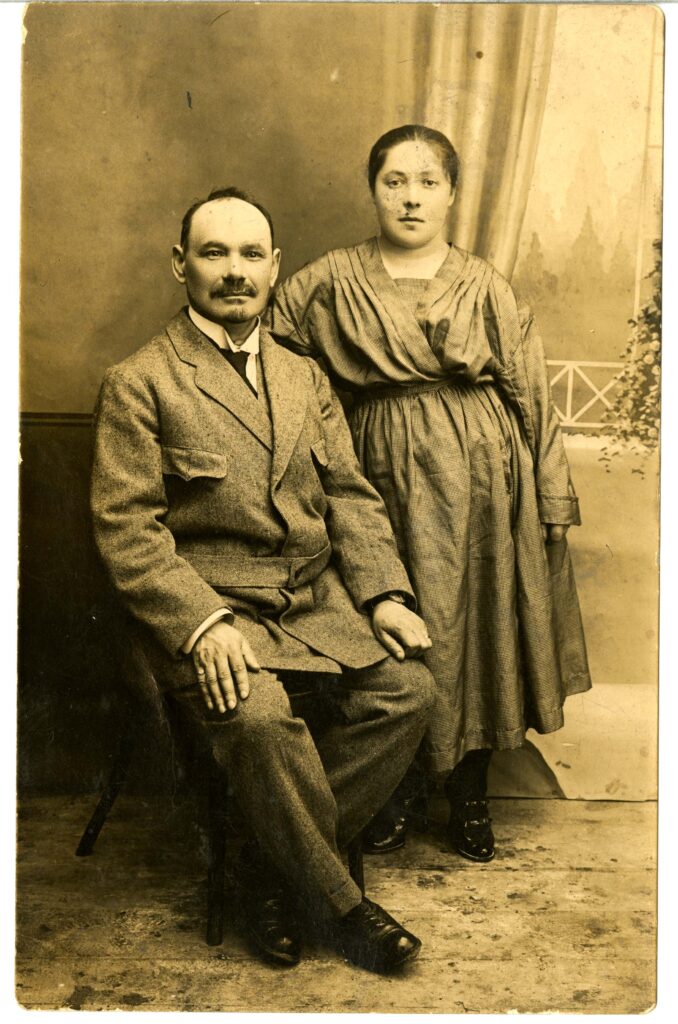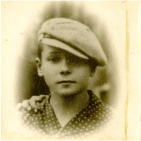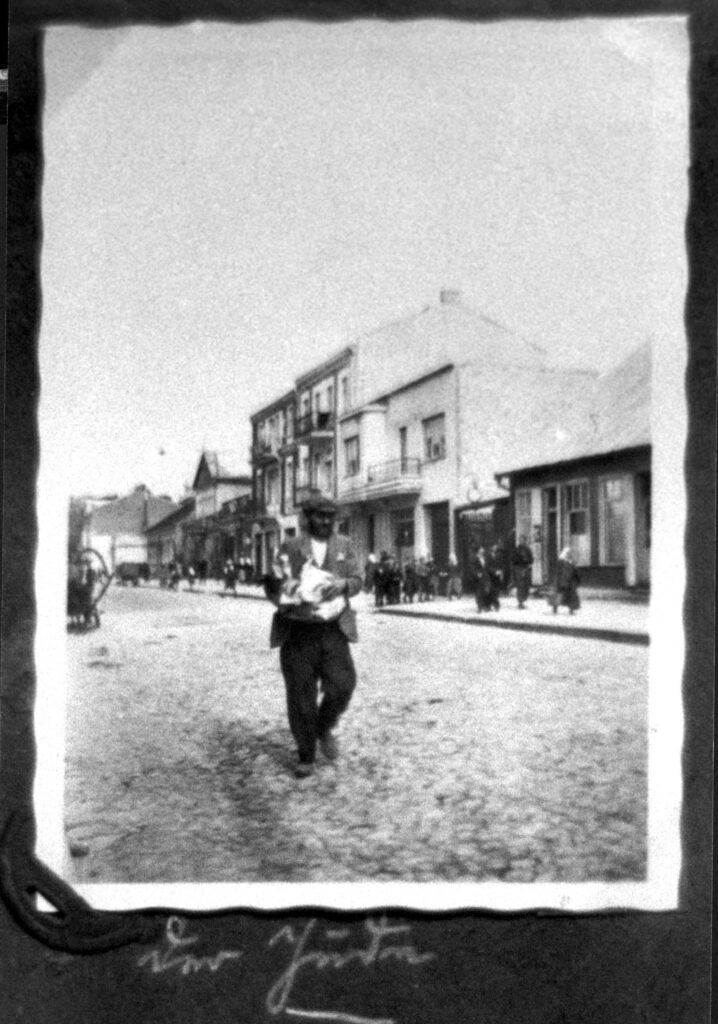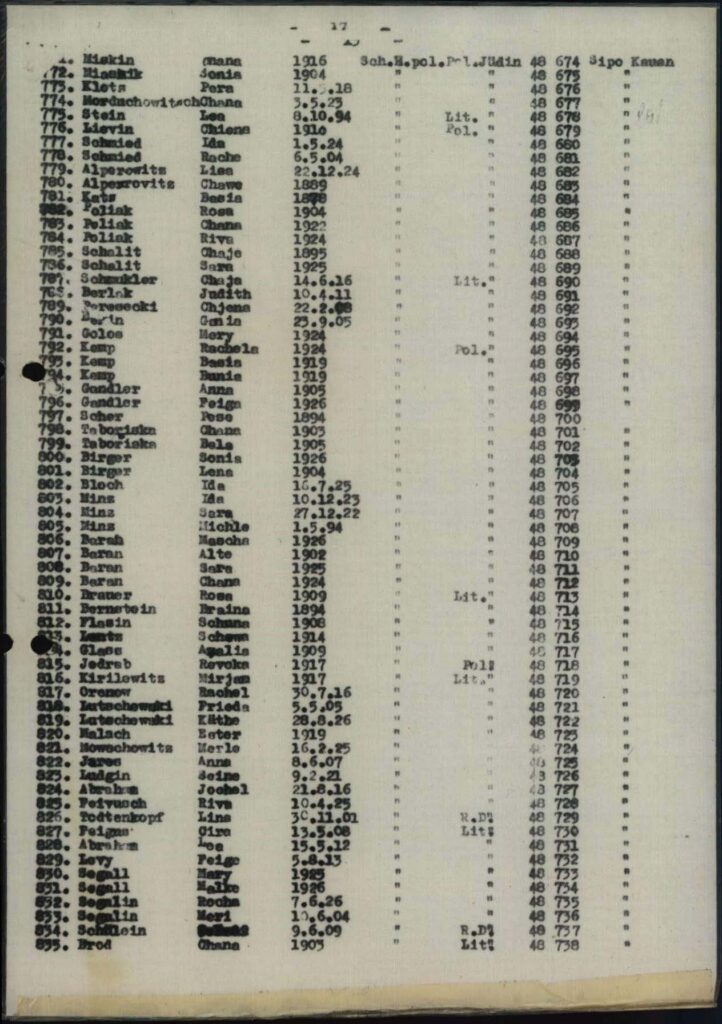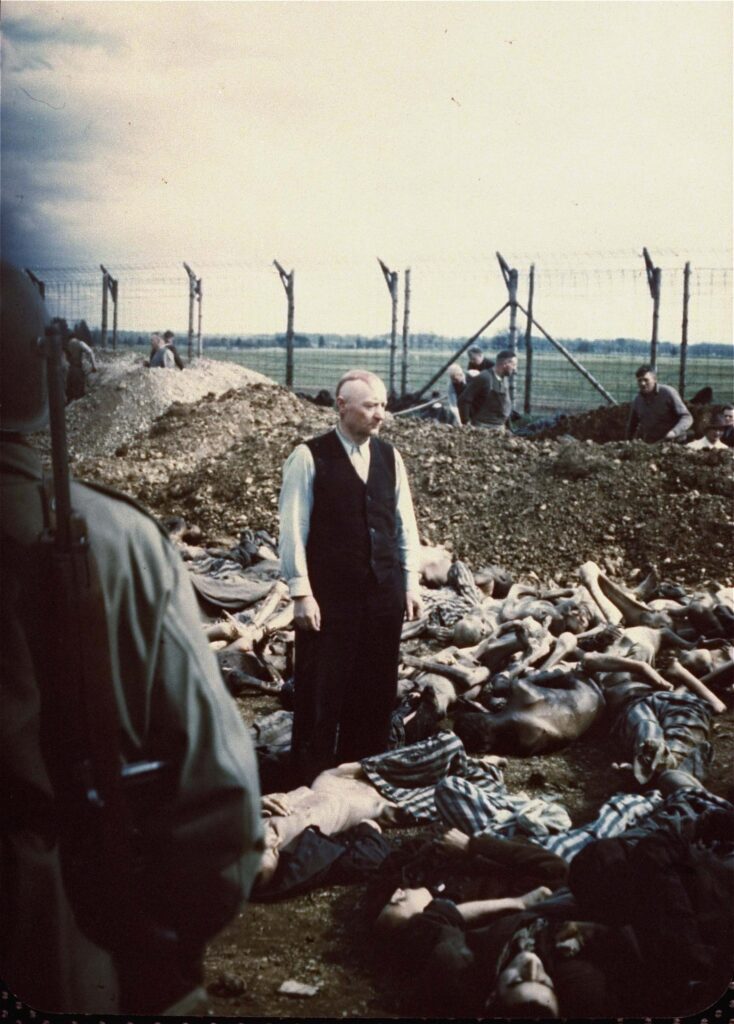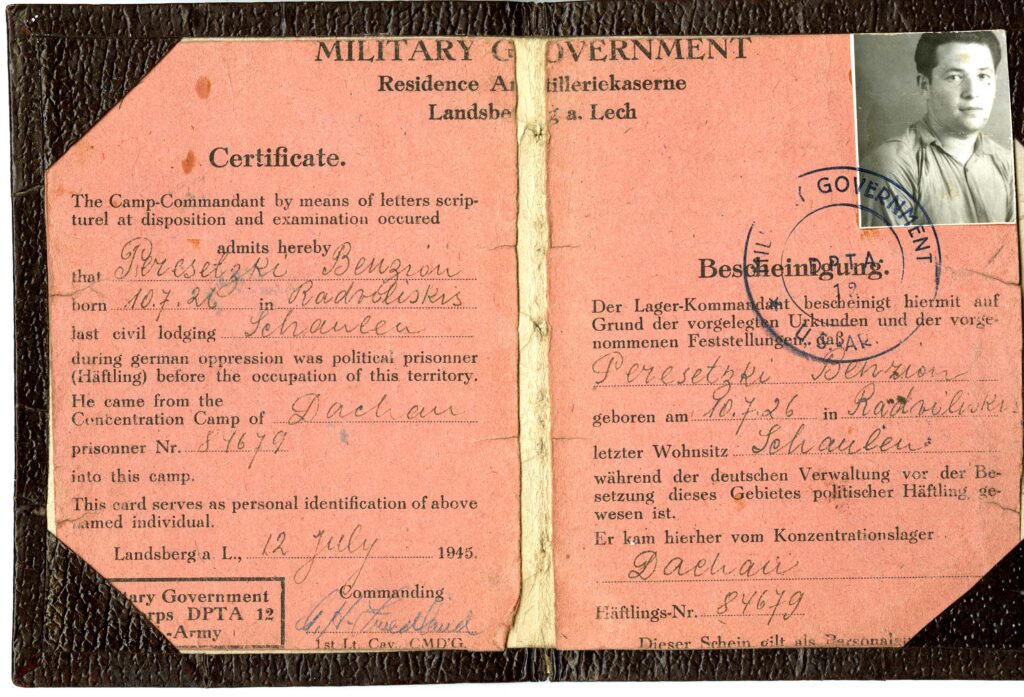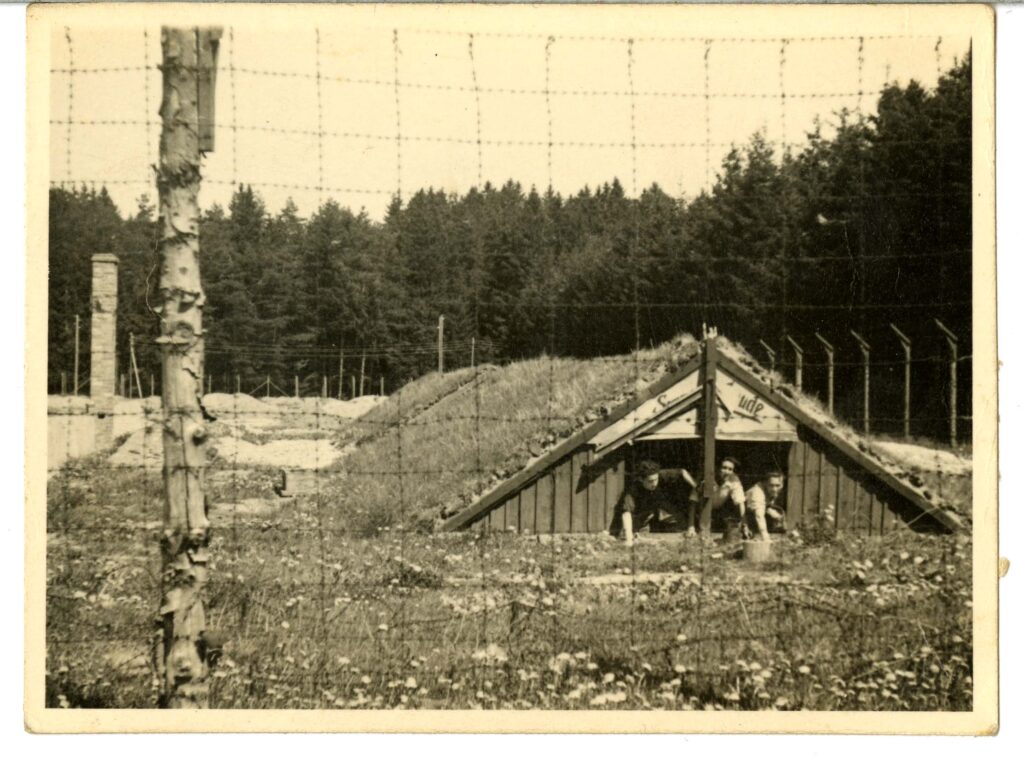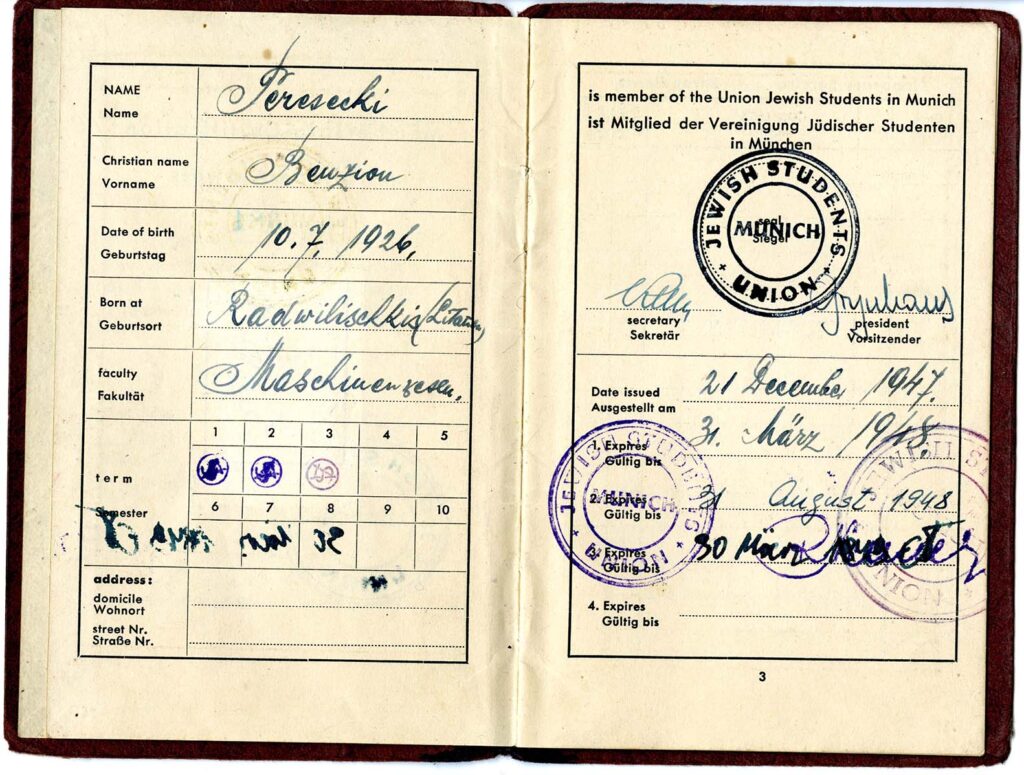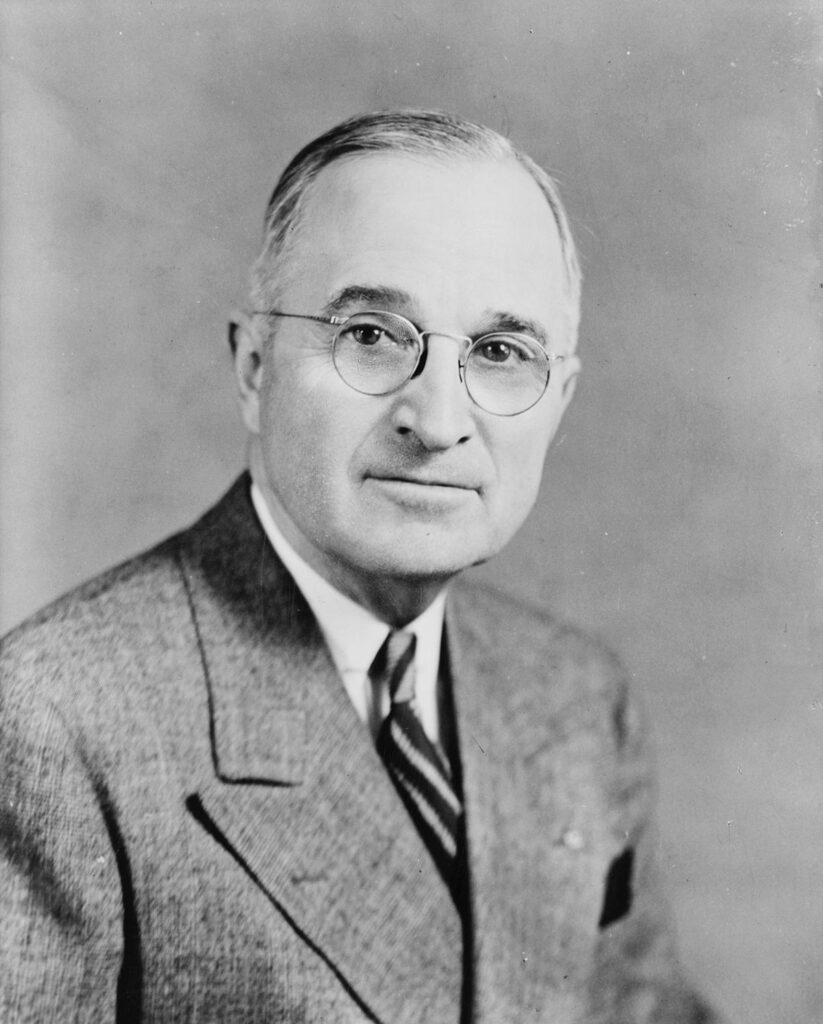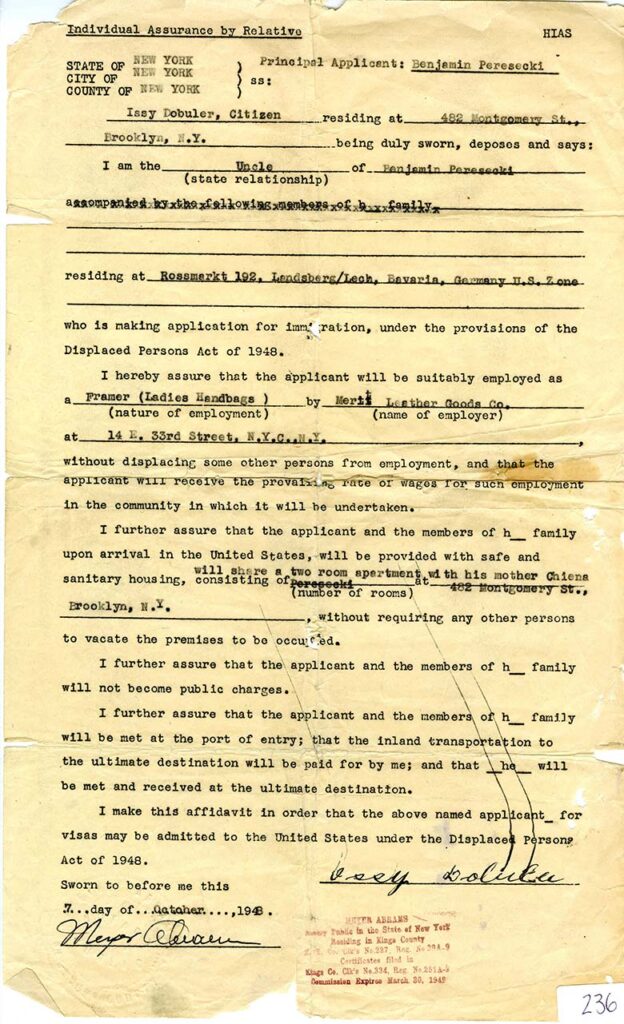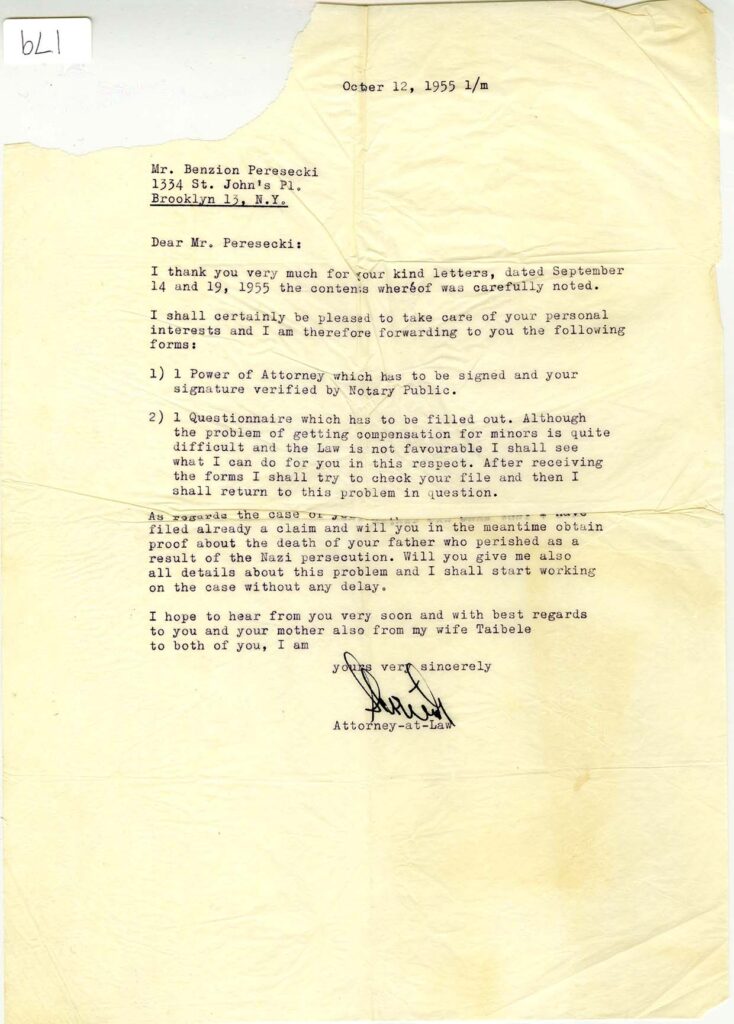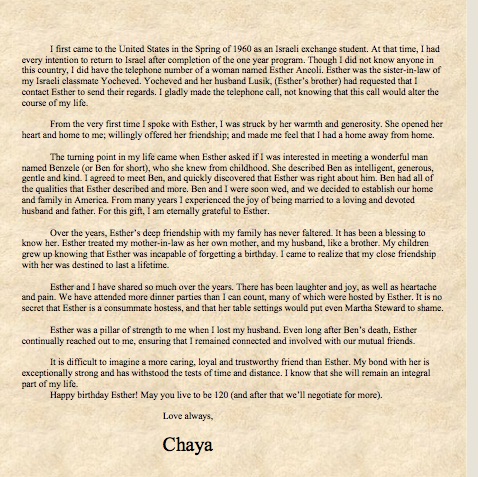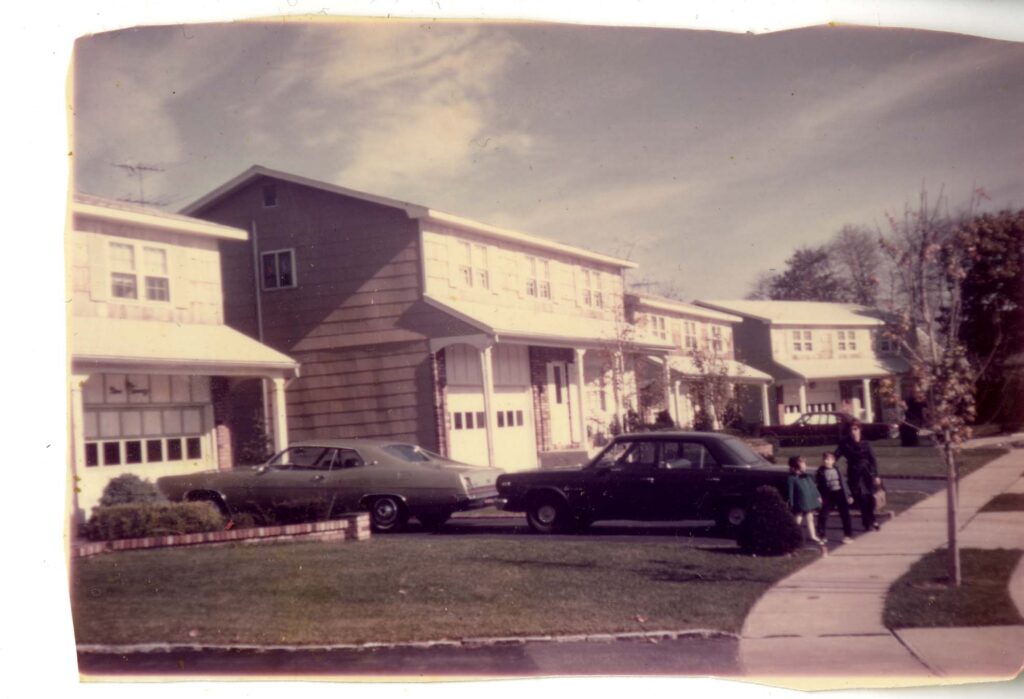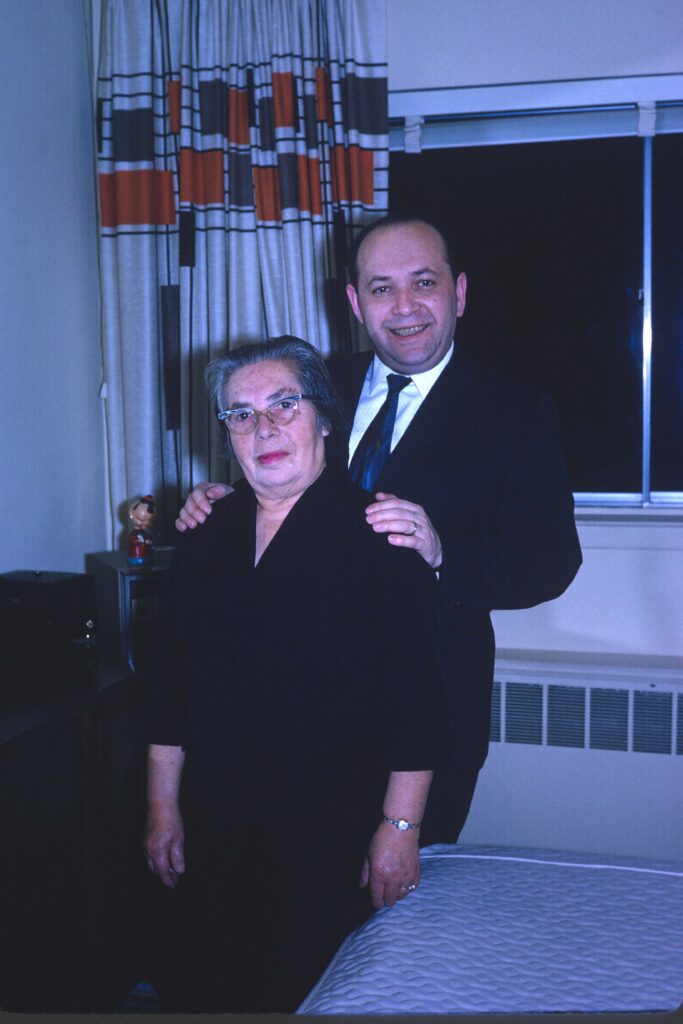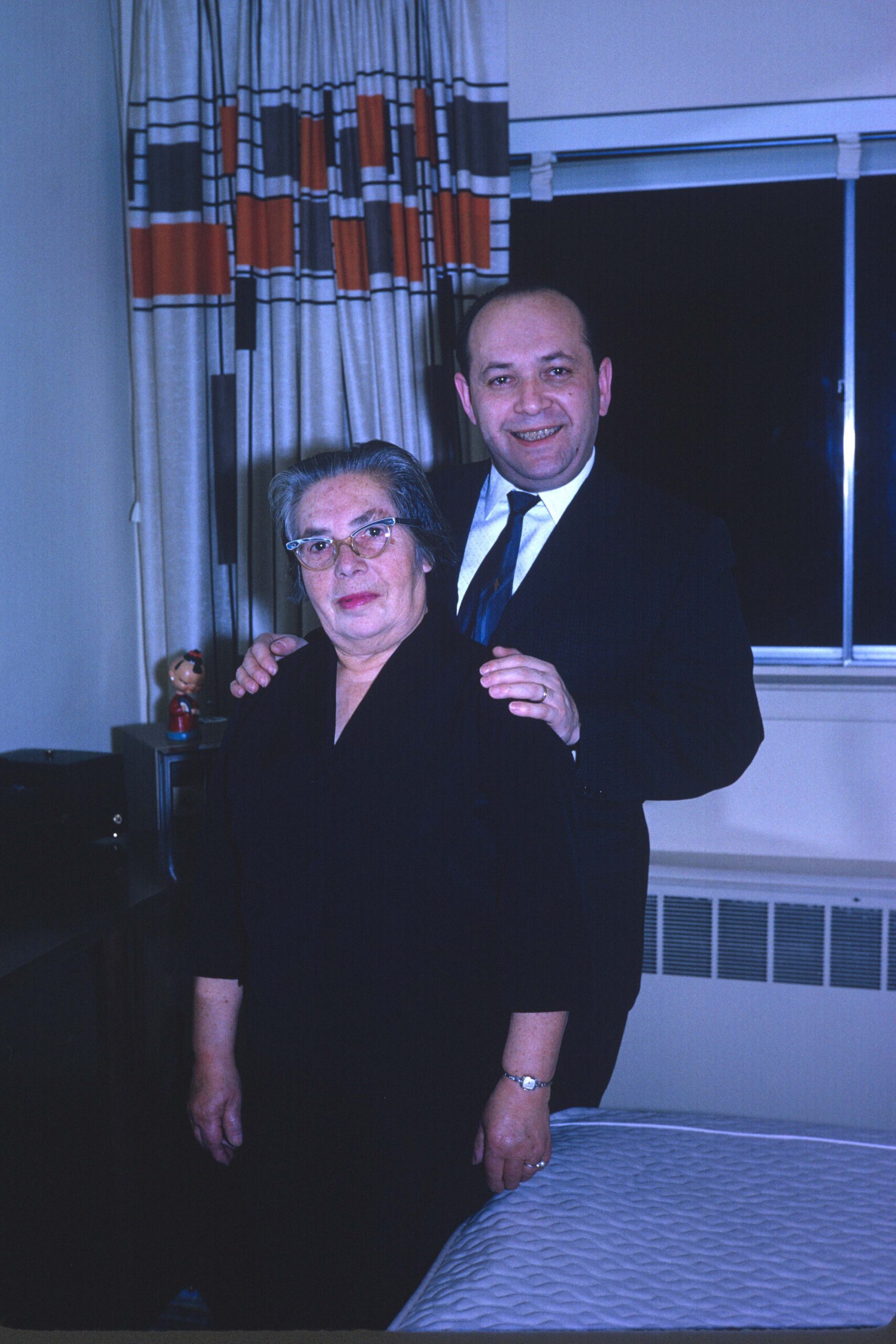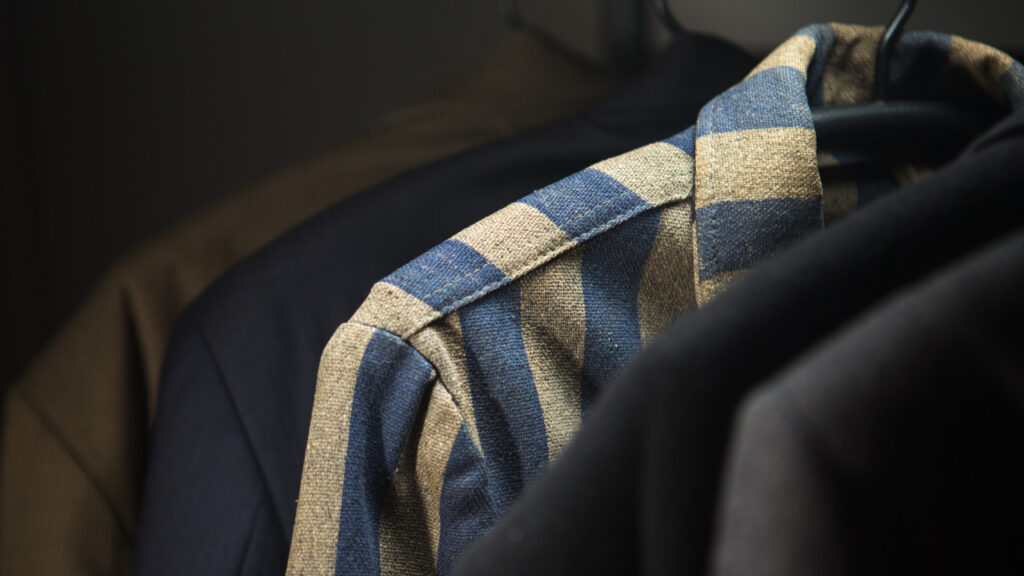Timeline
This timeline follows the life of Benzion Peresecki, from Radviliškis, Lithuania, through the Holocaust, and on to his postwar life in New York City. It highlights the immense geographic and emotional upheaval in Benzion’s life through the Siauliai Ghetto, the Kaufering Concentration Camp, the Landsberg Displaced Persons Camp, and on to his emigration to the United States, where he becomes Ben Peres, starts a family, and works to build a new life.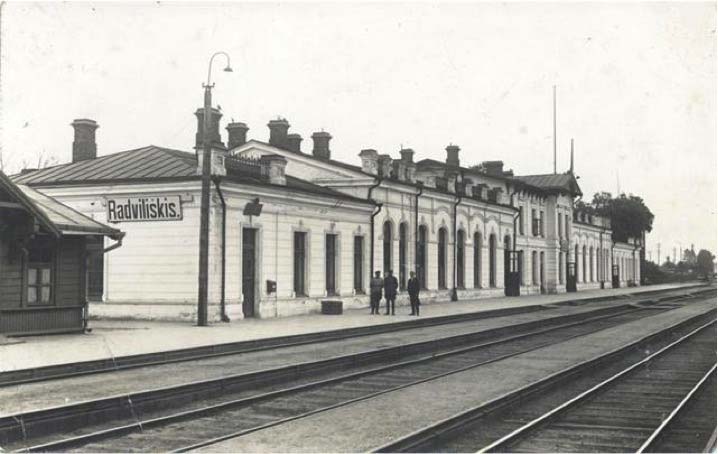
The Radviliškis Railway Station
Before World War II, Jews played a very active role in the social, cultural, and economic life in Radviliškis, as they did in Jewish communities throughout Lithuania. According to the 1931 Lithuanian government census, there were 42 shops and businesses in Radviliškis. 32 of them–76%–were owned by Jews, including three by Moshe Peresecki (Benzion Peresecki’s father).
The Radviliškis Railway Station
Before World War II, Jews played a very active role in the social, cultural, and economic life in Radviliškis, as they did in Jewish communities throughout Lithuania. According to the 1931 Lithuanian government census, there were 42 shops and businesses in Radviliškis. 32 of them–76%–were owned by Jews, including three by Moshe Peresecki (Benzion Peresecki’s father).
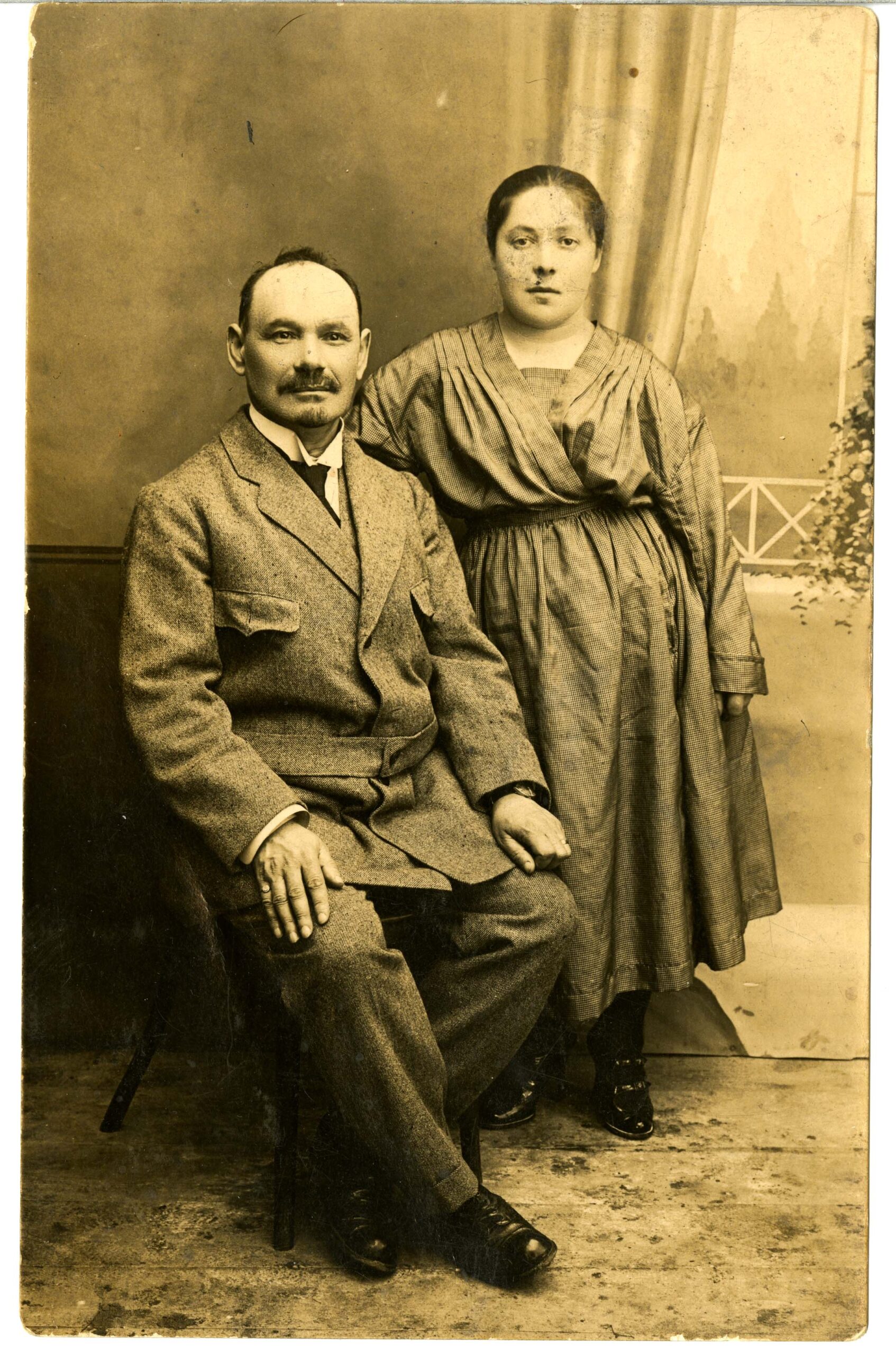
The Peresecki Family
Before World War II, the Peresecki family lived a comfortable life in Radviliškis, Lithuania. Moshe Peresecki owned three businesses around town: “Peresecki’s Little Meat and Fruit Store,” “Peresecki’s Photo Store,” and “Peresecki’s Wine Shop”. Chiena Peresecki was a homemaker, and Benzion and his brother Levi-Ichak were teenagers by the late 1930s.
The Peresecki Family
Before World War II, the Peresecki family lived a comfortable life in Radviliškis, Lithuania. Moshe Peresecki owned three businesses around town: “Peresecki’s Little Meat and Fruit Store,” “Peresecki’s Photo Store,” and “Peresecki’s Wine Shop”. Chiena Peresecki was a homemaker, and Benzion and his brother Levi-Ichak were teenagers by the late 1930s.
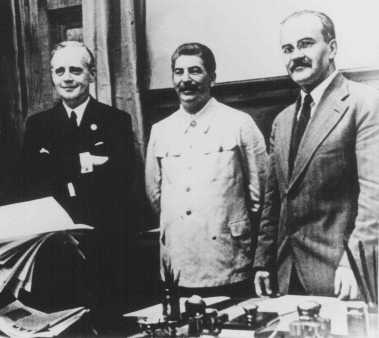
Ribbentrop-Molotov Pact
Nazi Germany and the Soviet Union signed an agreement of non-aggression just two weeks before Germany invaded Poland, starting World War II. The pact effectively ended Lithuanian independence by placing the country under Soviet influence. This led to the Soviet occupation of Lithuania in June 1940.
Ribbentrop-Molotov Pact
August 19, 1939
Nazi Germany and the Soviet Union signed an agreement of non-aggression just two weeks before Germany invaded Poland, starting World War II. The pact effectively ended Lithuanian independence by placing the country under Soviet influence. This led to the Soviet occupation of Lithuania in June 1940.
— Image: Wide World Photo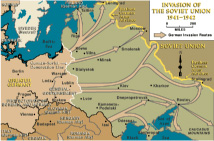
German Nazi Invasion of Lithuania
The German Nazi army invaded Soviet-occupied Lithuania. That same day local Lithuania “partisans” began pogroms targeting the Lithuanian Jewish population. Lithuanian Jews were viewed as Soviet collaborators and hence as traitors to the Lithuanian nationalist cause.
German Nazi Invasion of Lithuania
June 22, 1941
The German Nazi army invaded Soviet-occupied Lithuania. That same day local Lithuania “partisans” began pogroms targeting the Lithuanian Jewish population. Lithuanian Jews were viewed as Soviet collaborators and hence as traitors to the Lithuanian nationalist cause.
— Image: US Holocaust Memorial MuseumThe Murder of Levi-Ichak
July 11–12, 1941
Jewish men of the town of Radviliškis were rounded up and marched to the local Jewish cemetery, where they were shot into freshly dug pits by members of a German Einsatzgruppe and local “partisan” units.
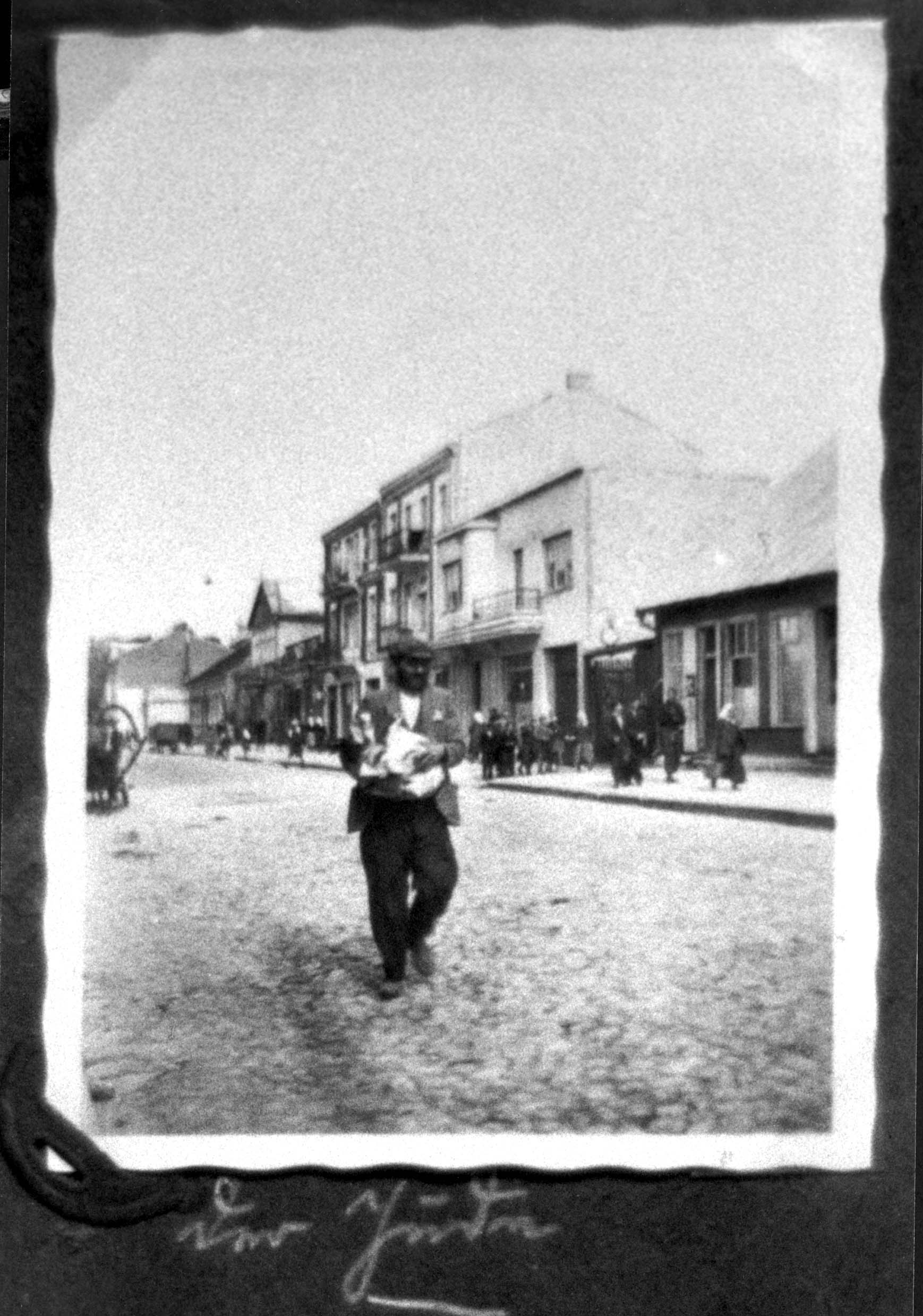
The Siauliai Ghetto
Between August and October of 1941, the remaining Jews of Radviliškis were transferred either to the Žagare ghetto on the Latvian border, or to the Siauliai Ghetto. Benzion and his mother Chiena were given special permission to move into the Siauliai Ghetto. The Jews who had been sent to Žagare were all murdered on October 2, 1941.
The Siauliai Ghetto
Between August and October of 1941, the remaining Jews of Radviliškis were transferred either to the Žagare ghetto on the Latvian border, or to the Siauliai Ghetto. Benzion and his mother Chiena were given special permission to move into the Siauliai Ghetto. The Jews who had been sent to Žagare were all murdered on October 2, 1941.
— Courtesy of Yad Vashem Photo Archive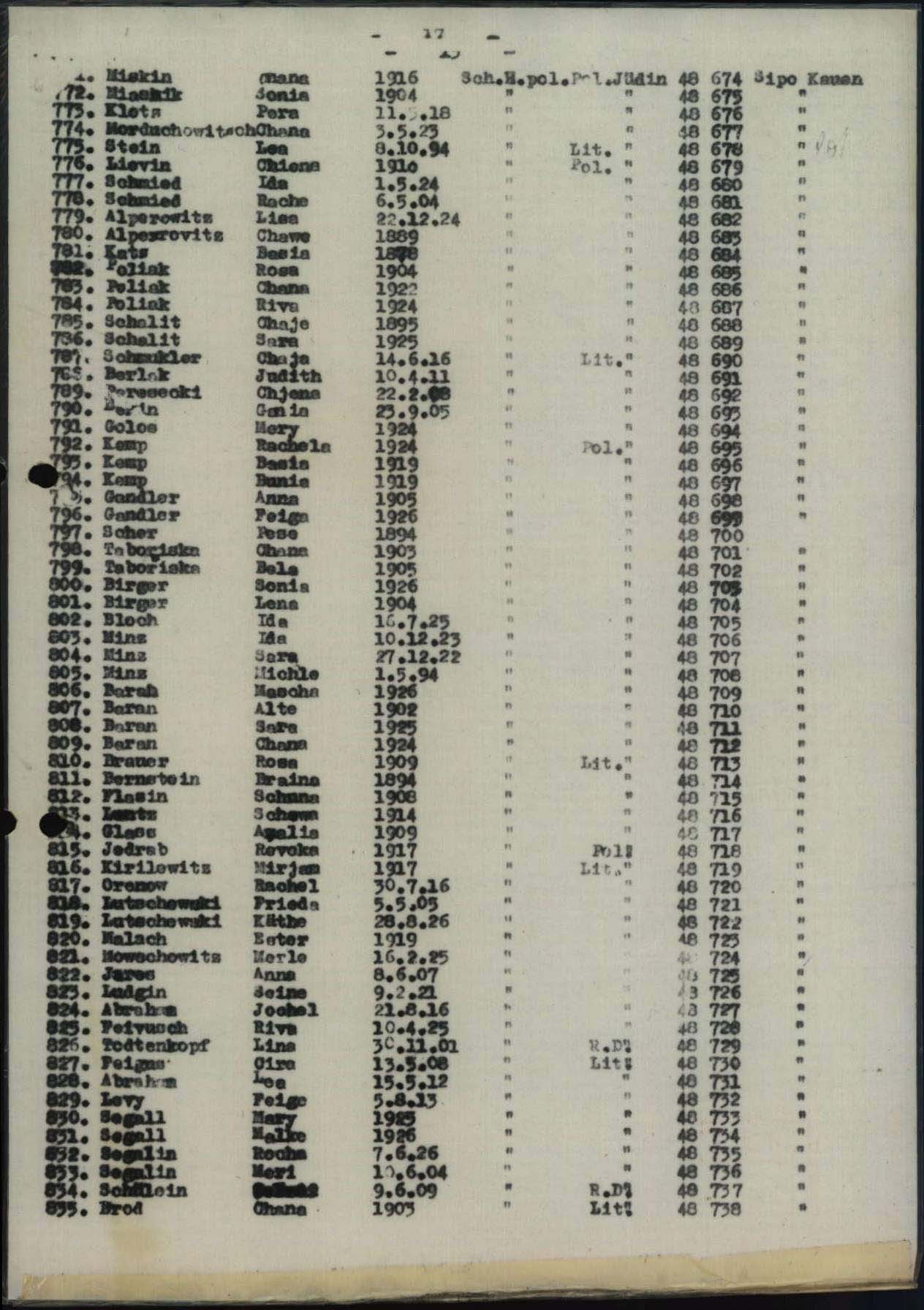
Chiena Peresecki Transferred to Stutthof Concentration Camp in Danzig (Gdańsk, Poland)
On this day, Chiena Peresecki entered the Stutthof concentration camp. Over the course of the war, approximately 85,000 of the 110,000 prisoners were murdered. It was the last concentration camp to be liberated by the Allies, on May 9, 1945.
Chiena Peresecki Transferred to Stutthof Concentration Camp in Danzig (Gdańsk, Poland)
July 20, 1944
On this day, Chiena Peresecki entered the Stutthof concentration camp. Over the course of the war, approximately 85,000 of the 110,000 prisoners were murdered. It was the last concentration camp to be liberated by the Allies, on May 9, 1945.
This image, courtesy of the United States Holocaust Memorial Museum in the international tracing service, is a camp log from Stutthof showing the registration of Chiena Peresecki into the camp.
Benzion Peresecki Transferred to Dachau Sub-Camp Kaufering
In August of 1941, the Nazis deported the remaining 10,000 Lithuanian Jews still in captivity, including Benzion and Chiena Peresecki, to concentration camps in Germany – primarily Dachau and Stutthof.
In August 1944, Benzion Peresecki arrived at Kaufering, where he remained until liberation on April 27, 1945.
Dachau, a major Nazi concentration camp near Munich, Germany, had over 30 sub-camps. At least 11 of these sub-camps were named Kaufering, for a railroad outpost 30 miles west of Dachau. There, Jewish and political prisoners built and worked in subterranean munitions and cement factories, insulated with 10 feet thick concrete walls in order to protect against allied bombing.
The prisoners at Dachau and Kaufering worked long and grueling hours, producing bullets, bombs, AKs, cement, and other armaments including the V-2 rocket. Prisoners were given meager rations, were often beaten, and were frequently forced on death marches by Nazi troops. Thousands of prisoners died of execution, starvation, disease, and exhaustion.
Benzion Peresecki Transferred to Dachau Sub-Camp Kaufering
August 1944
In August of 1941, the Nazis deported the remaining 10,000 Lithuanian Jews still in captivity, including Benzion and Chiena Peresecki, to concentration camps in Germany – primarily Dachau and Stutthof.
In August 1944, Benzion Peresecki arrived at Kaufering, where he remained until liberation on April 27, 1945.
Dachau, a major Nazi concentration camp near Munich, Germany, had over 30 sub-camps. At least 11 of these sub-camps were named Kaufering, for a railroad outpost 30 miles west of Dachau. There, Jewish and political prisoners built and worked in subterranean munitions and cement factories, insulated with 10 feet thick concrete walls in order to protect against allied bombing.
The prisoners at Dachau and Kaufering worked long and grueling hours, producing bullets, bombs, AKs, cement, and other armaments including the V-2 rocket. Prisoners were given meager rations, were often beaten, and were frequently forced on death marches by Nazi troops. Thousands of prisoners died of execution, starvation, disease, and exhaustion.
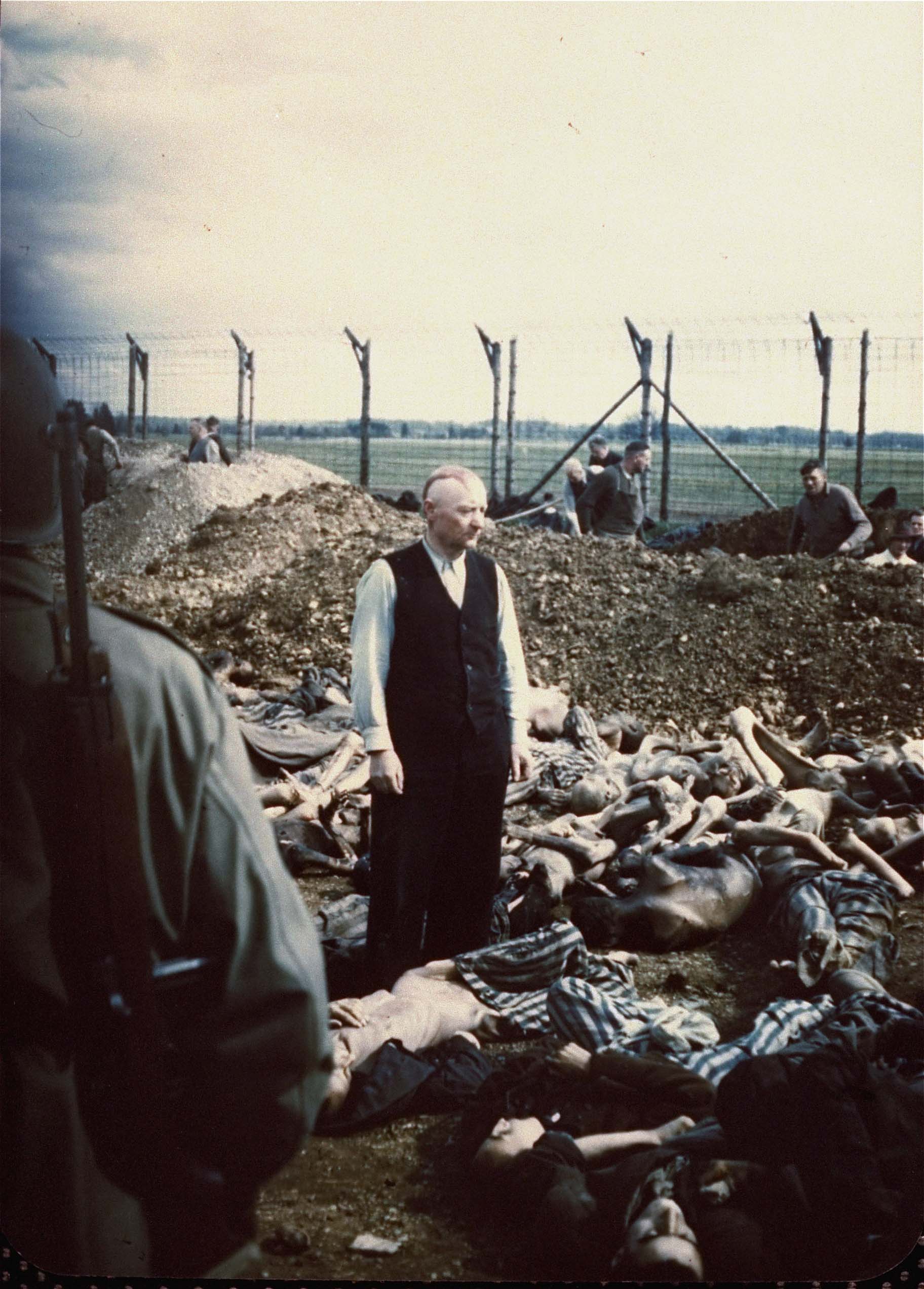
Liberation of Kaufering by the 12th Armored Division of the United States 7th Army
On that day, Johann Eichelsdorfer, the last Nazi commandant at Kaufering (pictured), was forced to stand among the corpses that were laid out prior to burial. Eichelsdorfer was convicted of war crimes and was hanged at Landsberg prison, a few miles from the Kaufering camp, on May 29, 1946.
Liberation of Kaufering by the 12th Armored Division of the United States 7th Army
April 27, 1945
On that day, Johann Eichelsdorfer, the last Nazi commandant at Kaufering (pictured), was forced to stand among the corpses that were laid out prior to burial. Eichelsdorfer was convicted of war crimes and was hanged at Landsberg prison, a few miles from the Kaufering camp, on May 29, 1946.
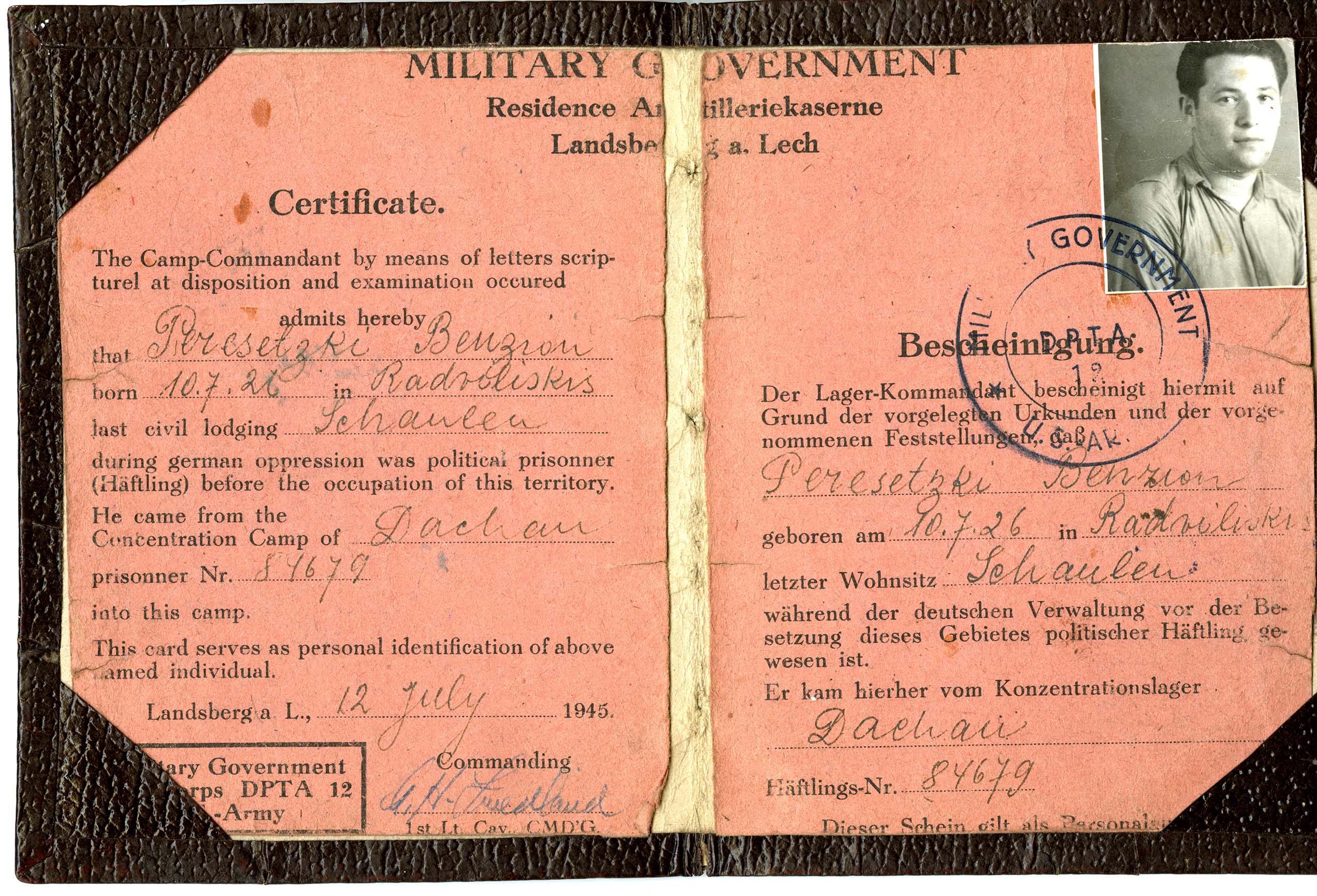
Benzion and Chiena Are Reunited at the Landsberg DP Camp
As part of the Marshall Plan to rebuild Europe after the war, displaced persons camps became vital in the effort to house, heal, train, and repatriate Holocaust survivors after liberation.
Landsberg, about 30 miles from Dachau, was the second- largest DP camp in postwar Europe and was where Benzion Peresecki reunited with his mother, Chiena. Situated in former military barracks, the Landsberg population ballooned to over 5000 Jewish DPs by 1946.
The populace of Landsberg was mainly comprised of Russian, Latvian, and Lithuanian survivors with a Russian- Jewish commander.
Landsberg had a strong Jewish life and culture, boasting a newspaper, radio station, synagogue (including a mikvah, Talmud, and Torah), as well as a small Yeshiva. The DP camp also had a sizable educational system, led by ORT (Society for Trades and Agricultural Labor) schools. Its programs were centered around engineering, technology, nursing, and basic job training. Benzion Peresecki received his high school graduate equivalency diploma through ORT.
Benzion and Chiena Are Reunited at the Landsberg DP Camp
October 5, 1946
As part of the Marshall Plan to rebuild Europe after the war, displaced persons camps became vital in the effort to house, heal, train, and repatriate Holocaust survivors after liberation.
Landsberg, about 30 miles from Dachau, was the second- largest DP camp in postwar Europe and was where Benzion Peresecki reunited with his mother, Chiena. Situated in former military barracks, the Landsberg population ballooned to over 5000 Jewish DPs by 1946.
The populace of Landsberg was mainly comprised of Russian, Latvian, and Lithuanian survivors with a Russian- Jewish commander.
Landsberg had a strong Jewish life and culture, boasting a newspaper, radio station, synagogue (including a mikvah, Talmud, and Torah), as well as a small Yeshiva. The DP camp also had a sizable educational system, led by ORT (Society for Trades and Agricultural Labor) schools. Its programs were centered around engineering, technology, nursing, and basic job training. Benzion Peresecki received his high school graduate equivalency diploma through ORT.
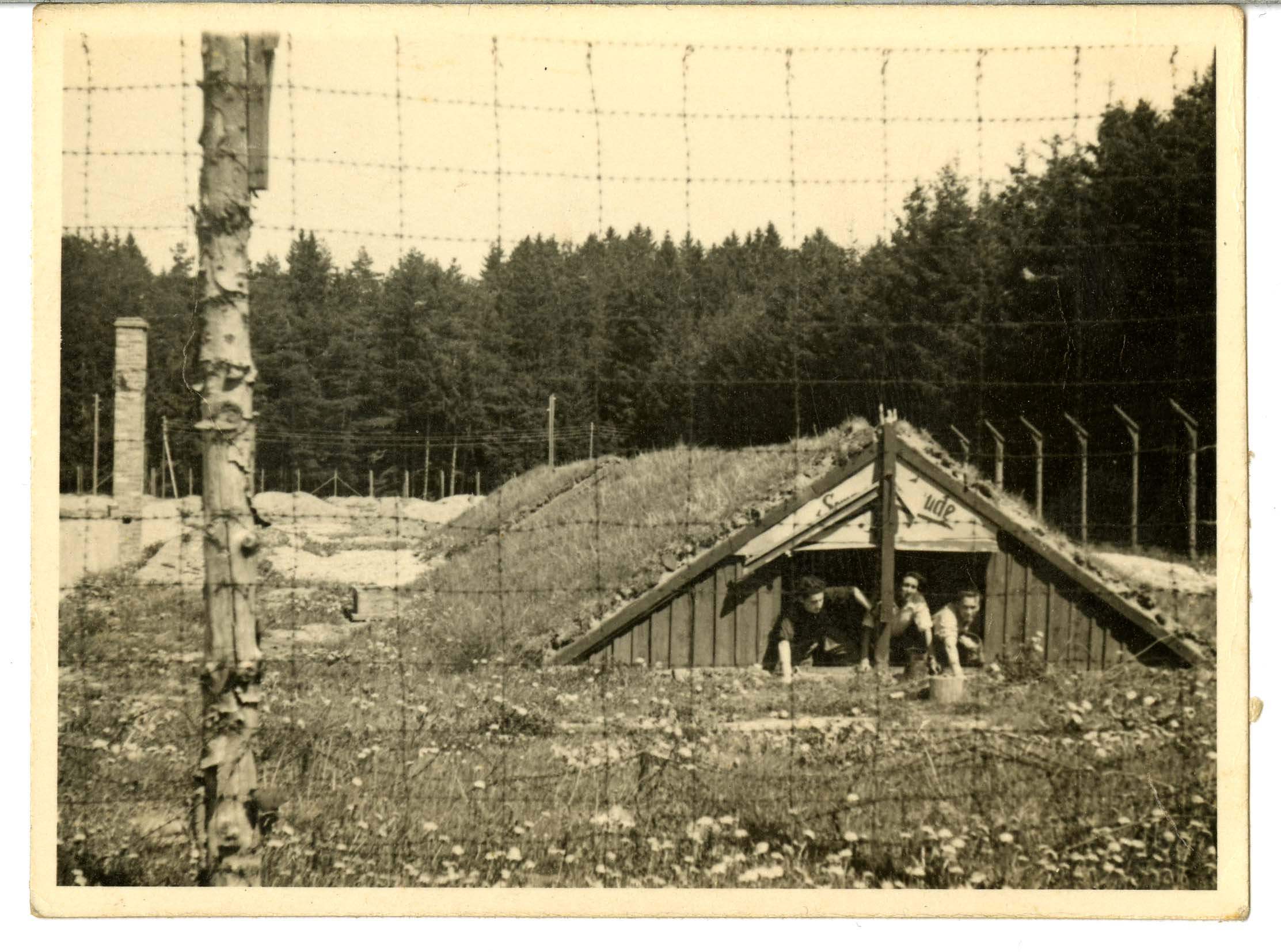
Benzion Peresecki Revisits the Kaufering Barracks and Munitions Factories from the Nearby Landsberg Displaced Persons Camp
On the day of the Jewish holiday Yom Kippur (Day of Atonement), Benzion Peresecki revisited the Kaufering barracks and munitions factories from the nearby Landsberg displaced persons camp. He traveled with several friends. Someone brought a camera to document the visit.
Benzion Peresecki Revisits the Kaufering Barracks and Munitions Factories from the Nearby Landsberg Displaced Persons Camp
October 5, 1946
On the day of the Jewish holiday Yom Kippur (Day of Atonement), Benzion Peresecki revisited the Kaufering barracks and munitions factories from the nearby Landsberg displaced persons camp. He traveled with several friends. Someone brought a camera to document the visit.
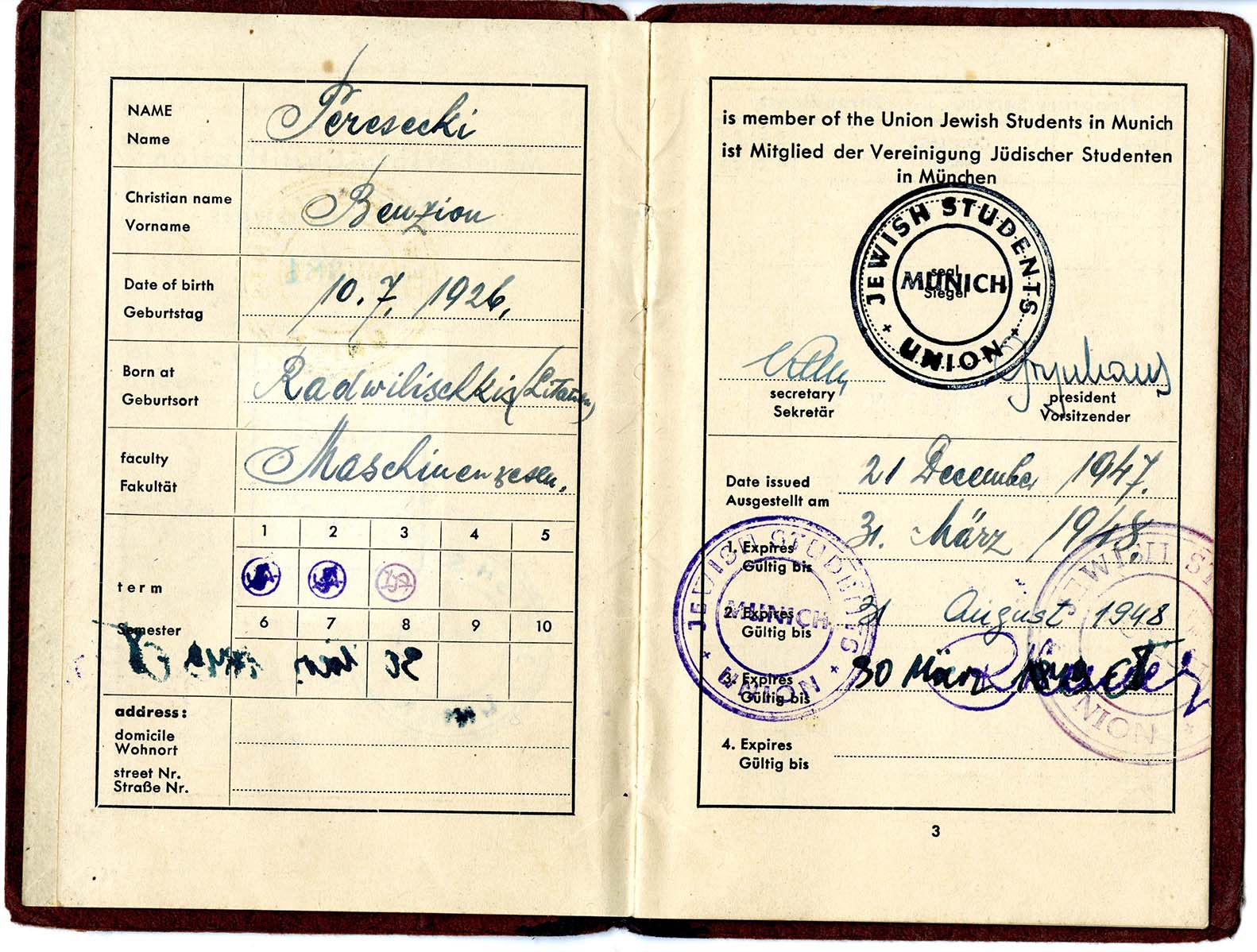
Benzion Peresecki Begins Studying in Munich for a Degree in Engineering
For many Jews in displaced persons camps, education and job training were essential for re-entry into society. After Benzion passed his high school equivalency test, he began engineering training in nearby Munich, commuting daily from his barracks in Landsberg. The image shown is his membership document for the Jewish Students’ Union in Munich.
Benzion Peresecki Begins Studying in Munich for a Degree in Engineering
For many Jews in displaced persons camps, education and job training were essential for re-entry into society. After Benzion passed his high school equivalency test, he began engineering training in nearby Munich, commuting daily from his barracks in Landsberg. The image shown is his membership document for the Jewish Students’ Union in Munich.

Interview Record Recommending That Ben and His Mother Be Allowed to Immigrate to USA
Displaced people in the camps were interviewed by international relief organizations that were helping refugees resettle in new countries. This interviewer recommends that Ben and his mother be allowed to immigrate to either the United States or Palestine.
“Suffered very much from German Nazis. Was in Conc. Camp. Kaufering Bei Dachau, Deut.”
“A young boy with his Mother, a student, will go to U.S.A., where they has [sic.] their only relatives, where he will be able to study. If it will not be possibilities to go to U.S.A. they will try emigration to Palestine.”
Interview Record Recommending That Ben and His Mother Be Allowed to Immigrate to USA
February 22, 1948
Displaced people in the camps were interviewed by international relief organizations that were helping refugees resettle in new countries. This interviewer recommends that Ben and his mother be allowed to immigrate to either the United States or Palestine.
“Suffered very much from German Nazis. Was in Conc. Camp. Kaufering Bei Dachau, Deut.”
“A young boy with his Mother, a student, will go to U.S.A., where they has [sic.] their only relatives, where he will be able to study. If it will not be possibilities to go to U.S.A. they will try emigration to Palestine.”

Truman's Response to the United States Displaced Persons Act
In 1948, Harry S. Truman, the 33rd President of the United States, gave this response to a U.S. congressional bill entitled the Displaced Persons Act. Truman argued against the discriminatory nature of the bill:
“Again, on January 7, 1948, I urged the Congress to pass suitable legislation at once so that this Nation may do its share in caring for homeless and suffering refugees of all faiths. I believe that the admission of these persons will add to the strength and energy of the Nation. The Congress did not act at once.”
“The bad points of the bill are numerous. Together they form a pattern of discrimination and intolerance wholly inconsistent with the American sense of justice. The bill discriminates in callous fashion against displaced persons of the Jewish faith. This brutal fact cannot be obscured by the maze of technicalities in the bill or by the protestations of some of its sponsors.”
“For all practical purposes, it must be frankly recognized, therefore, that this bill excludes Jewish displaced persons, rather than accepting a fair proportion of them along with other faiths. The bill also excludes many displaced persons of the Catholic faith who deserve admission. Many anticommunist refugees of Catholic faith ed into the American zones after December 22, 1945, in order to escape persecution in countries dominated by a Communist form of government. These too are barred by the December 22, 1945, dateline.”
“The bill reflects a singular lack of confidence by the Congress in the capacity and willingness of the people of the United States to extend a welcoming hand to the prospective immigrants.”
“I know what a bitter disappointment this bill is to the many displaced victims of persecution who looked to the United States for hope; to the millions of our citizens who wanted to help them in the nest American spirit; to the many Members of the Congress who fought hard but unsuccessfully for a decent displaced persons bill. I hope that this bitter disappointment will not turn to despair.”
Truman's Response to the United States Displaced Persons Act
June 25, 1948
In 1948, Harry S. Truman, the 33rd President of the United States, gave this response to a U.S. congressional bill entitled the Displaced Persons Act. Truman argued against the discriminatory nature of the bill:
“Again, on January 7, 1948, I urged the Congress to pass suitable legislation at once so that this Nation may do its share in caring for homeless and suffering refugees of all faiths. I believe that the admission of these persons will add to the strength and energy of the Nation. The Congress did not act at once.”
“The bad points of the bill are numerous. Together they form a pattern of discrimination and intolerance wholly inconsistent with the American sense of justice. The bill discriminates in callous fashion against displaced persons of the Jewish faith. This brutal fact cannot be obscured by the maze of technicalities in the bill or by the protestations of some of its sponsors.”
“For all practical purposes, it must be frankly recognized, therefore, that this bill excludes Jewish displaced persons, rather than accepting a fair proportion of them along with other faiths. The bill also excludes many displaced persons of the Catholic faith who deserve admission. Many anticommunist refugees of Catholic faith ed into the American zones after December 22, 1945, in order to escape persecution in countries dominated by a Communist form of government. These too are barred by the December 22, 1945, dateline.”
“The bill reflects a singular lack of confidence by the Congress in the capacity and willingness of the people of the United States to extend a welcoming hand to the prospective immigrants.”
“I know what a bitter disappointment this bill is to the many displaced victims of persecution who looked to the United States for hope; to the millions of our citizens who wanted to help them in the nest American spirit; to the many Members of the Congress who fought hard but unsuccessfully for a decent displaced persons bill. I hope that this bitter disappointment will not turn to despair.”
— Image source here
The Peres's Search for a Home
On May 1st, 1949, Benzion Peresecki, now Ben Peres, moved to his Uncle’s apartment at 482 Montgomery Street in the Crown Heights section of Brooklyn. He lived in at least three different locations in New York City between 1948 and 1968, including in Brooklyn, Manhattan, and the Bronx. Ben carried the jacket from Dachau with him during each relocation.
The Peres's Search for a Home
May 1st, 1949
On May 1st, 1949, Benzion Peresecki, now Ben Peres, moved to his Uncle’s apartment at 482 Montgomery Street in the Crown Heights section of Brooklyn. He lived in at least three different locations in New York City between 1948 and 1968, including in Brooklyn, Manhattan, and the Bronx. Ben carried the jacket from Dachau with him during each relocation.
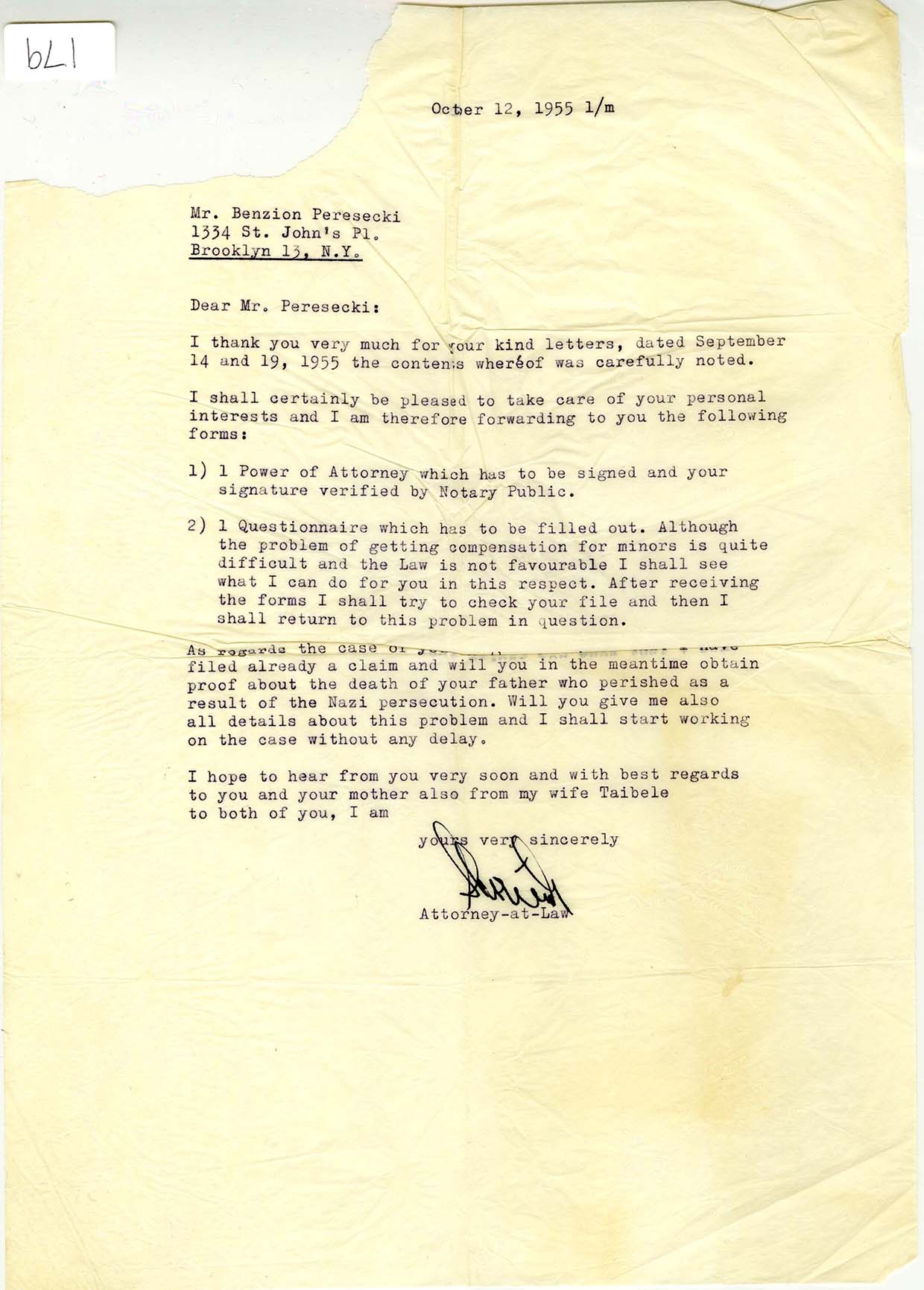
The Peres's Reparations Effort
In an effort to obtain justice for their pain, suffering, and associated health costs, many survivors of the Holocaust sought restitution from the post-war German government.
Holocaust reparations cases, most often international legal efforts, took years to compile, file, and adjudicate.
The Peres family actively sought reparations in a multi-decade effort, using the services of a lawyer in Munich, Germany, Dr. J.A. Levenson.
The Peres's Reparations Effort
In an effort to obtain justice for their pain, suffering, and associated health costs, many survivors of the Holocaust sought restitution from the post-war German government.
Holocaust reparations cases, most often international legal efforts, took years to compile, file, and adjudicate.
The Peres family actively sought reparations in a multi-decade effort, using the services of a lawyer in Munich, Germany, Dr. J.A. Levenson.
Ben Meets His Future Wife Chaya Eisental
Chaya Eisental was an Israeli exchange student who came to the US in 1960. Ben and Chaya were introduced to each other through their mutual acquaintance Esther Ancoli. They were married on September 4, 1961 at the Concourse Paradise Theater in the Bronx.
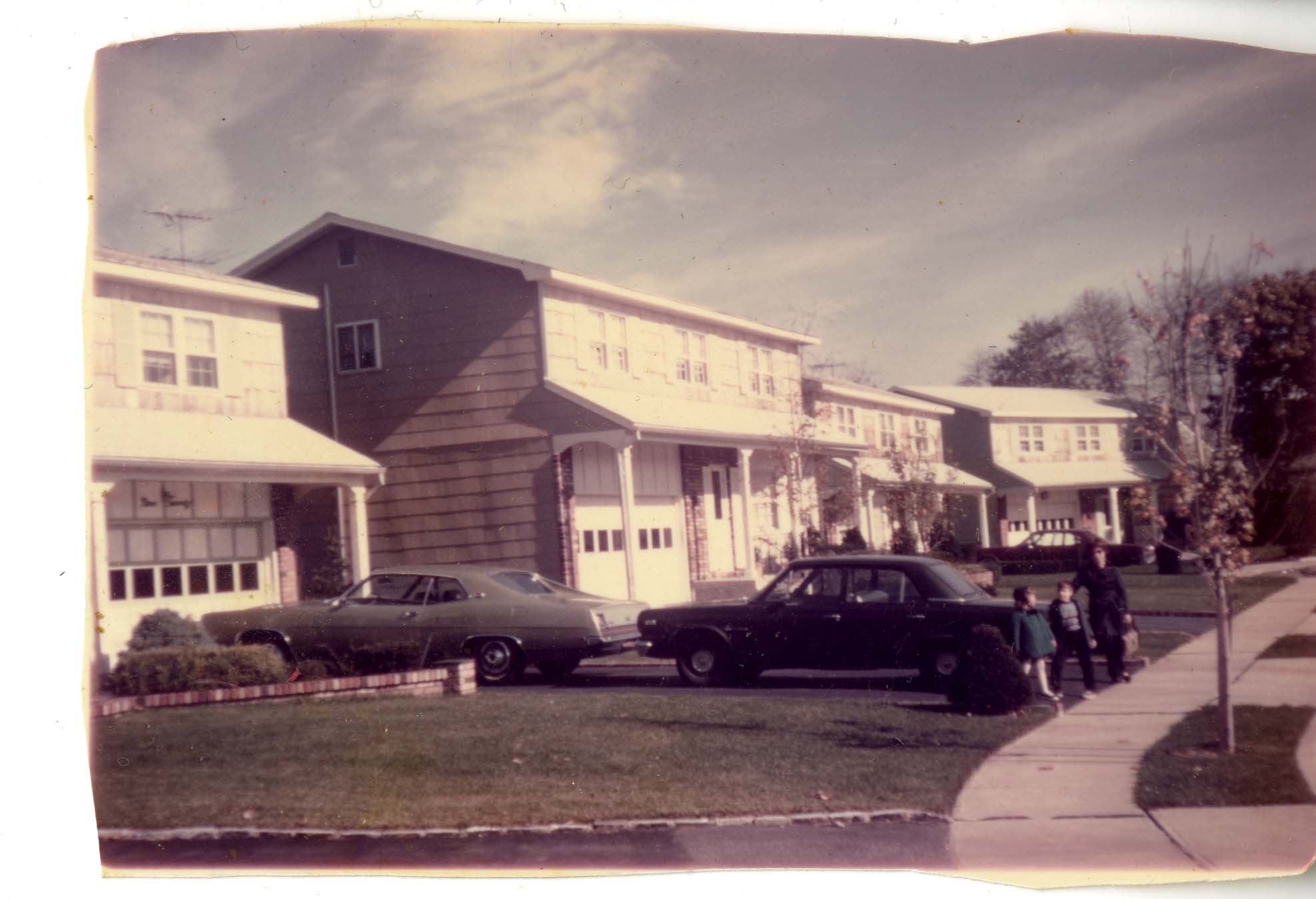
The Peres Family Buys a House in N. Bellmore, Long Island
In the summer of 1968, with enough money from their German reparations effort, Ben and his mother put a down payment on a newly built, four-bedroom ranch house with a single-car garage at: 920 Siems Court, North Bellmore, Long Island.
Ben, his mother Chiena, his wife Chaya, his son Michael, and his daughter Lorrie all lived in this house.
The Peres Family Buys a House in N. Bellmore, Long Island
In the summer of 1968, with enough money from their German reparations effort, Ben and his mother put a down payment on a newly built, four-bedroom ranch house with a single-car garage at: 920 Siems Court, North Bellmore, Long Island.
Ben, his mother Chiena, his wife Chaya, his son Michael, and his daughter Lorrie all lived in this house.
Ben Peres's Death
June 23, 1978
After surviving the Holocaust and finally settling down in his new home, Ben Peres died after suffering a stroke during his daughter’s Bat Mitzvah ceremony. He was 52 years old.

Ben's Dachau Jacket is Discovered
On July 4, 2015, Ben’s jacket, which had been in his closet for 65 years (and 37 years after his death), was discovered at the estate sale of his home in N. Bellmore, Long Island by a vintage clothing collector named Jillian Eisman. Ms. Eisman’s grandfather served in the Soviet army during World War II, and her brother was killed on 9/11; so she immediately recognized the jacket as an object of pain, understanding, comfort, and reflection with which the public should engage. She subsequently donated the jacket to the Kupferberg Holocaust Center to ensure that students and the broader community could view the jacket and understand its significance.
Ben's Dachau Jacket is Discovered
July 4, 2015
On July 4, 2015, Ben’s jacket, which had been in his closet for 65 years (and 37 years after his death), was discovered at the estate sale of his home in N. Bellmore, Long Island by a vintage clothing collector named Jillian Eisman. Ms. Eisman’s grandfather served in the Soviet army during World War II, and her brother was killed on 9/11; so she immediately recognized the jacket as an object of pain, understanding, comfort, and reflection with which the public should engage. She subsequently donated the jacket to the Kupferberg Holocaust Center to ensure that students and the broader community could view the jacket and understand its significance.
